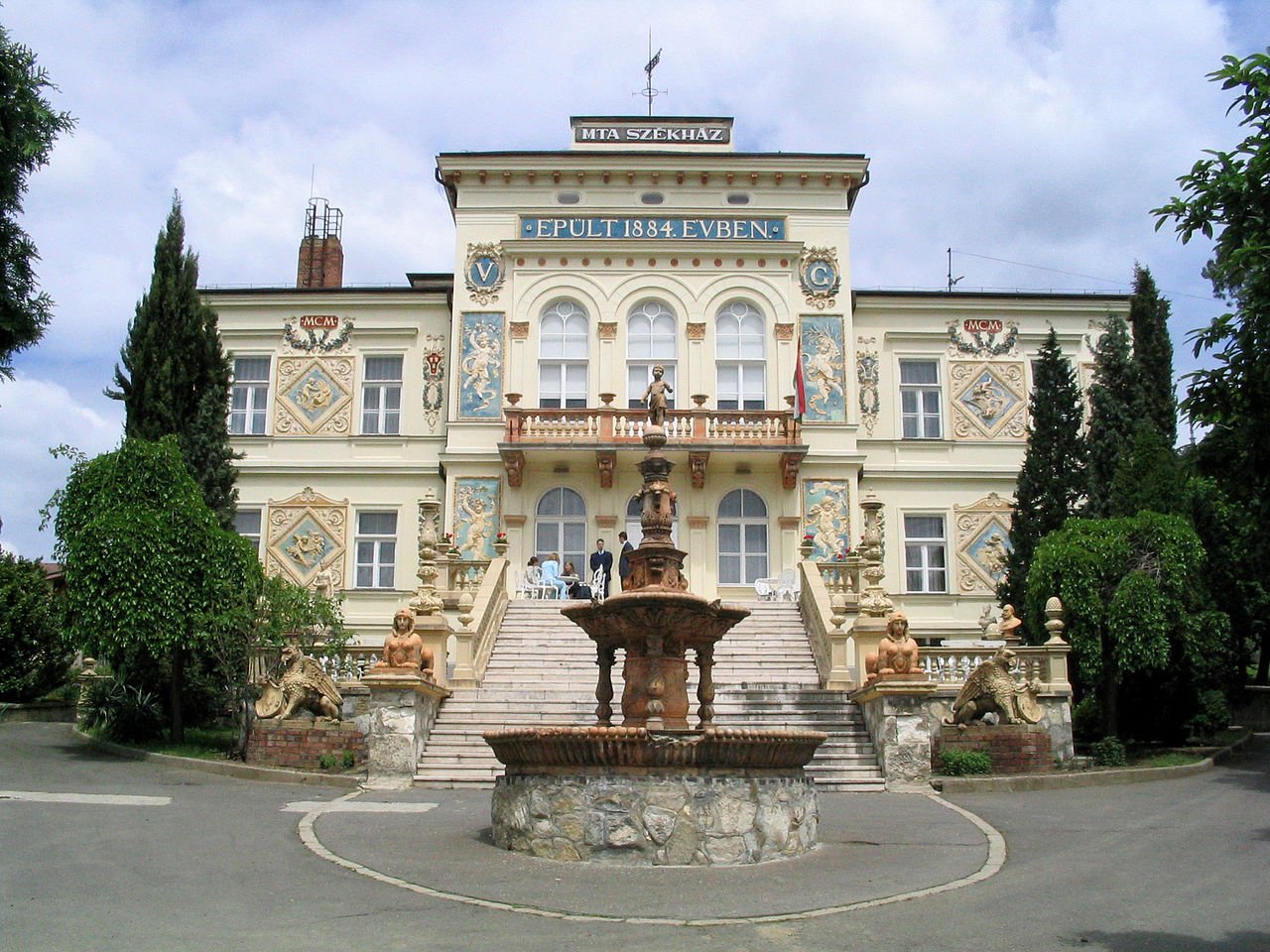#6991. Neo-Renaissance Façade of the Hungarian Academy of Sciences from 1884: Symmetry, Ornamentation, and Color Accents
Before us stands an exquisite example of Hungarian architecture from the late 19th century — the MTA SZÉKHÁZ building (Hungarian Academy of Sciences), constructed in 1884, as indicated by the inscription "ÉPÜLT 1884. ÉVBEN" on the façade. This magnificent structure represents a splendid example of eclectic style with Neo-Renaissance elements, characteristic of Central European architecture of that period.
The façade is distinguished by its rich decorative ornamentation and symmetrical composition. The central part is emphasized by a projection featuring three arched windows on the second floor and an elegant balcony. Particularly noteworthy are the decorative medallions and ornamental panels depicting cherubs and mythological creatures, which are harmoniously integrated into the architectural ensemble. The color scheme of the façade is built on the contrast between the cream-colored base of the walls and blue decorative elements, giving the building a special refinement.
The grand staircase with a fountain at its center leads to the main entrance, creating a ceremonial atmosphere as one approaches the building. On both sides of the staircase are decorative sculptures that serve not only as ornaments but also as symbolic elements defining the space. Vertical accents are created by slender cypress trees flanking the building, emphasizing its monumentality.
For contemporary facade design of a private home, several techniques can be borrowed from this historical example: symmetrical composition, the use of decorative elements to accentuate important parts of the building, harmonious combination of colors and materials, as well as a thoughtful organization of the entrance area with elements of landscape design. Even on a reduced scale, these techniques can give a residential house expressiveness and individuality.
